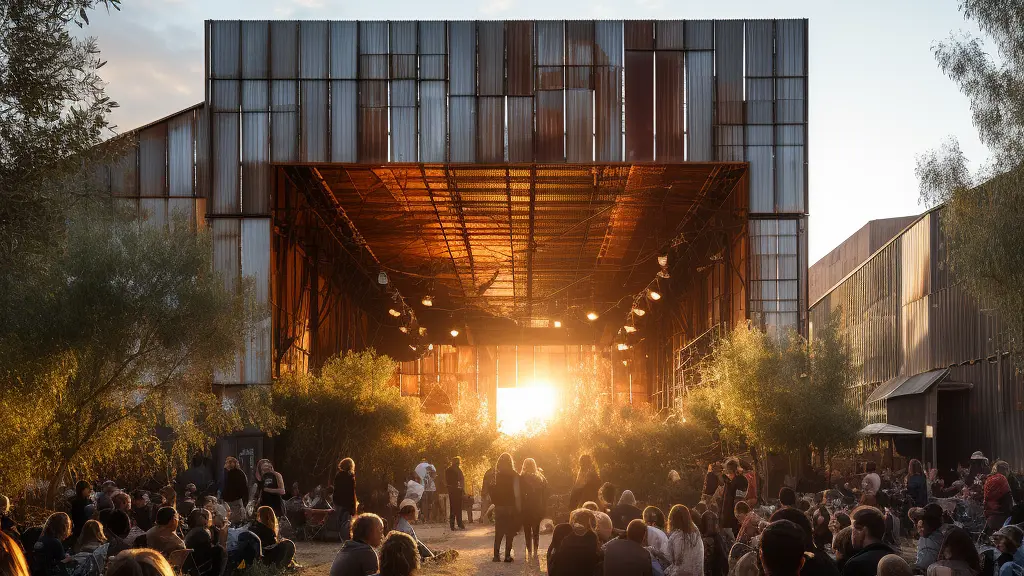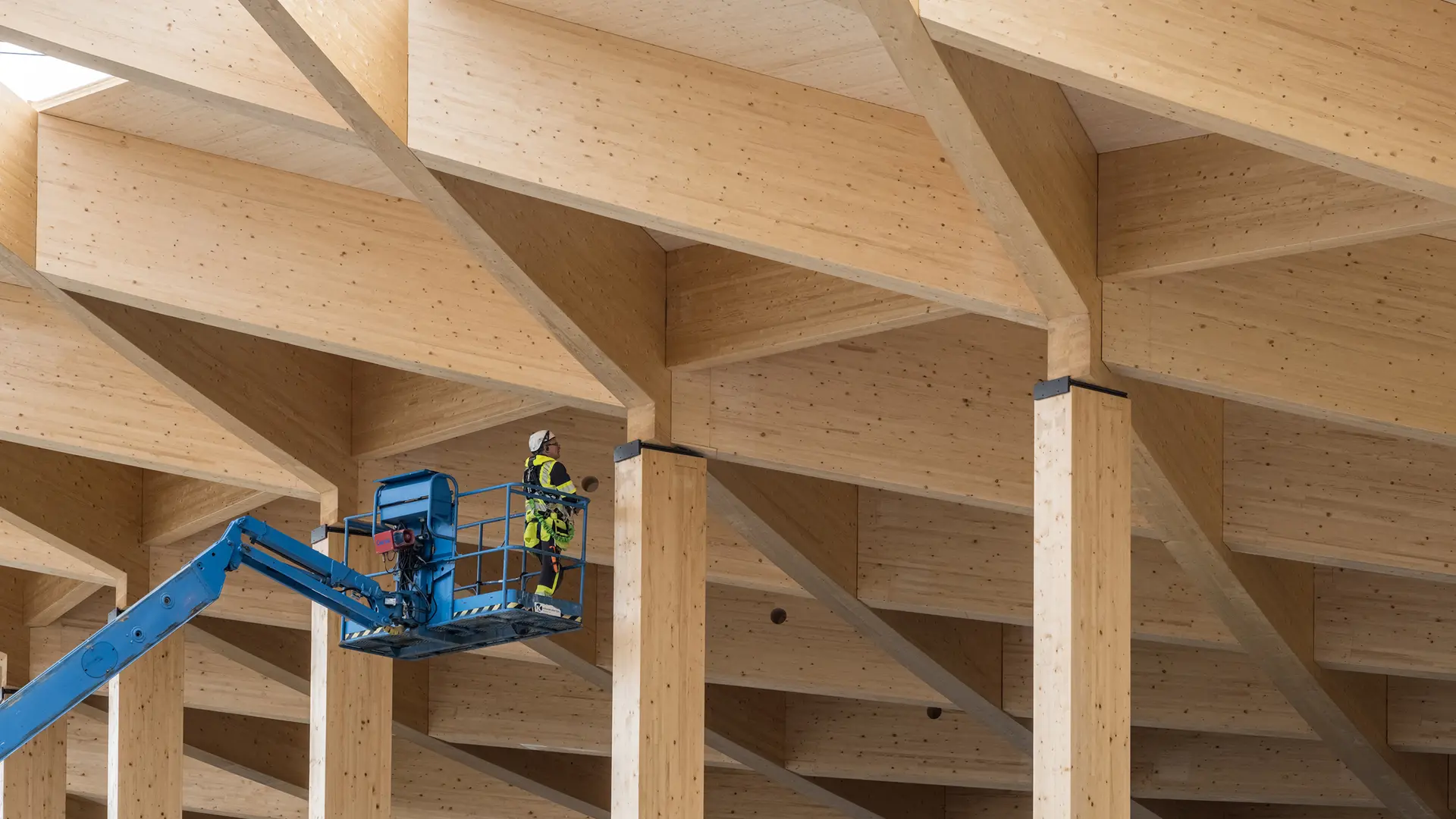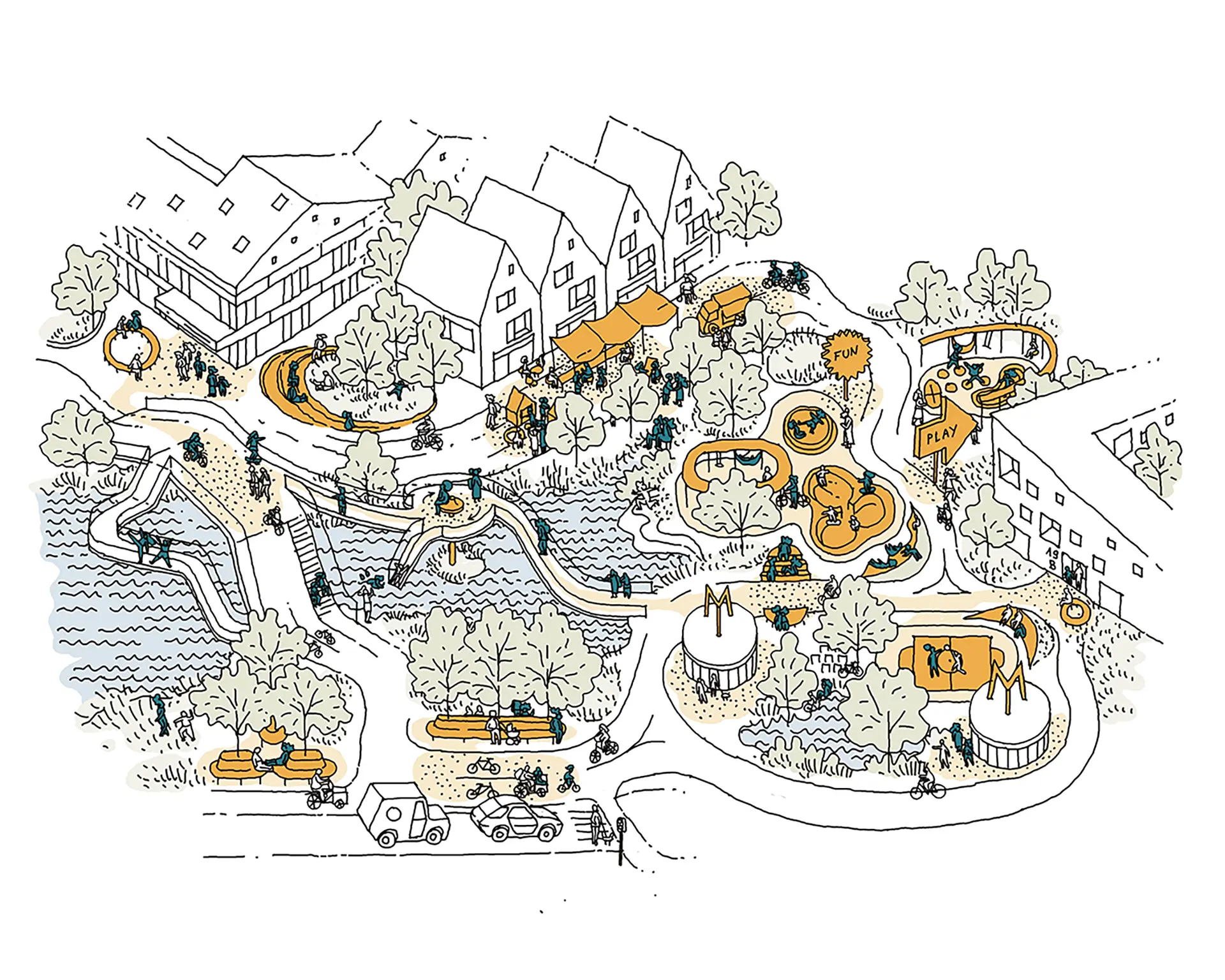Championing climate resilience: small changes for a big impact

June 5 is World Environment Day and reminds us of the transformative action that is required by governments, cities, businesses, and civil society to combat climate change and restore our planet to a state that can endure the many generations to come.
To celebrate World Environment Day, we are sharing some of the small things we do every day to stand up for sustainability across architecture, landscape architecture and urbanism.
Turn Challenges into Opportunities
“Germany is still affected by the past two year’s pandemic and now also the situation in Ukraine. We don’t have the same access to materials as we used to, and there’s often a delay in deliveries. This obviously challenges the time schedule, but it also puts a restraint on the design that is new to us.
But, instead of looking at it as a problem, we’ve seized the opportunity to adjust our mindset and have come up with new and innovative solutions. Not having access to the materials we’re used to working with, has pushed us to rethink our choices – also in the longer run – which has proven to benefit both the projects and the planet."
Lucas Ziegler, Associate Design Director, Munich
Find New Ways to Break with Old Habits
"Concrete and cement are responsible for 8% of the world’s carbon emissions. So, one could say that we should be researching new materials to replace them, but at the end of the day, concrete isn't disappearing from the construction industry anytime soon. We need to find better ways to use it with less environmental impact in the short and long term.
3D printing is being optimized all the time and there are a lot of claims within the industry about how sustainable it is.
Concrete isn't disappearing from the construction industry anytime soon. We need to find better ways to use it with less environmental impact.
The first part of my research will be to establish a workflow to ensure that the way we 3D print at HL will actually be sustainable. Collaborating with material scientists and structural engineers, we will investigate structural limitations to provide architects with feedback, indicating - as they design - whether something can or cannot be printed. The second part will focus on environmental impact through life-cycle as-sessments and carbon costings. These will also be embedded into the work-flow, calculating in parallel and keeping a tally that will offer architects a means of comparing the carbon costs of their various design choices."
Katie Heywood, Industrial PhD Fellow, Additive Manufacturing, Copenhagen
Trust the Evidence
“Almost a generation later after the first digital turn, computational developments not just provide us with tools for making, but tools for thinking - which is crucial when it comes to making a positive impact on complex problems like climate change and its devastating effects. The quest for finding the best solution will be informed and supported by reliable tools and systems, giving designers not a new set of constraints, but rather a new, greater degree of insight into the environment and the impact of their decisions. Computational tools allow us to investigate, iterate, experiment in order to make the right decisions.
It’s next to impossible to think of the construction industry today and not consider computational design and -engineering as one of the leading parts - let alone coming up with sustainable solutions without them.“
Ashkan Rezaee, Computational Design Architect, Copenhagen
It’s next to impossible to think of the construction industry today and not consider computational design.
Acknowledge What You Don’t Know
"In my job as an urban designer, sustainability means creating spaces that support a good life for everyone within the planetary boundaries. It sounds simple but it is not! Working with sustainability is about retrieving and pairing knowledge from a diverse group of disciplines - and then apply it!
Start by acknowledging the complexity of a project to gain an overview of the knowledge you need but don’t have. Obtain the knowledge from reliable sources - may it be knowledge about human behavior or bio-based materials – and then combine and translate the entire knowledge pool into solutions that help the planet and people thrive."
Yalda Pilehchian, Senior Urban Design, Copenhagen
Don’t be afraid to challenge the brief
"In 2021, we consumed the equivalent of 1,7 planets, but we don’t have an extra planet or a planet B. Therefore, I always encourage to challenge the brief and ask the questions: Do I have to tear down and build something new? Can I preserve something, reduce the need of new materials and at the same time contribute to cultural identity? Can unused areas be utilized in favor of nature, its flora and fauna instead of potentially unused square meters?
Developers need to acknowledge that we are designing cities, not building projects.
To really succeed in building sustainable societies, developers need to acknowledge that we are designing cities, not building projects. It all starts with a sustainable ambition that take all environmental aspects into account. And make a good place to live for all species, not just humans. That’s how I believe we will succeed with planet A."
Maren Hersleth Holsen, Division Leader, Urbanism, Oslo



